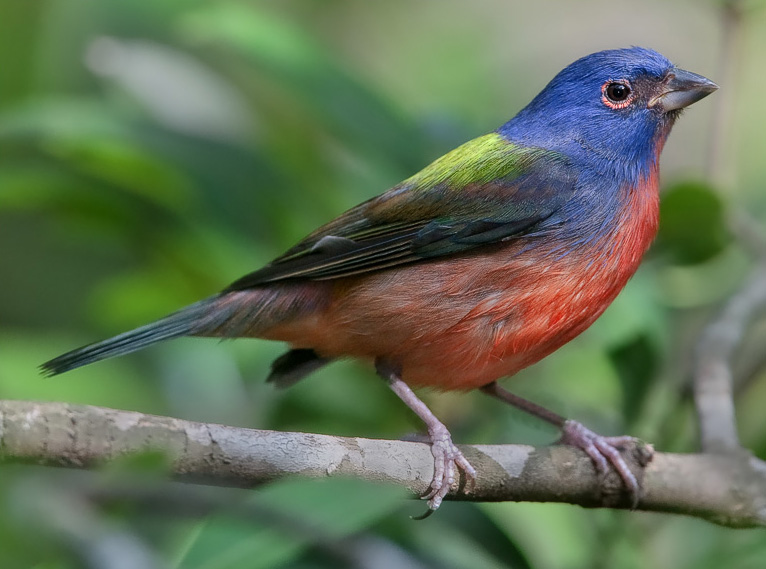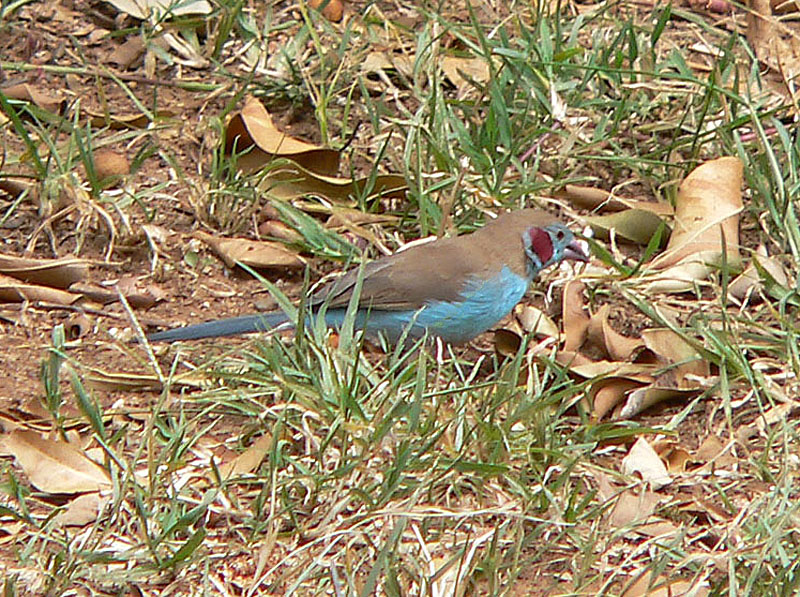Most aviculturists are aware that most parrot species face threats to their continued survival in the wild. However, I sometimes feel that the successes that we have had both in and out of captivity blinds us to the fact that a great many, including several that are well-established in the pet trade, are still declining in the wild.
Parrot Central
 The region extending from New Zealand northwest through Australia to New Guinea and the islands of Indonesia is home to the world’s greatest diversity of parrots, with over one half of the known genera represented. Conservation efforts are most effective in Australia and New Zealand, but less in evidence in New Guinea and islands in the Southwest Pacific.
The region extending from New Zealand northwest through Australia to New Guinea and the islands of Indonesia is home to the world’s greatest diversity of parrots, with over one half of the known genera represented. Conservation efforts are most effective in Australia and New Zealand, but less in evidence in New Guinea and islands in the Southwest Pacific.
Threatened Species
Of the many parrot species in need of attention in the area, the World Conservation Union (IUCN) considers 20 to be threatened with. Particularly troublesome is the fact that almost half of these are listed as either “Endangered” or Critically Endangered”, including the New Caledonian, Kuhl’s and Ultramarine Lorikeets, the Night, Orange-bellied and Golden-shouldered Parrots, the Forbes’ and Orange-fronted Parakeets and the Kakapo.
Australia
Habitat Loss
 Habitat loss and alteration is the gravest threats facing Australia’s parrots. The felling of old trees bearing suitable hollows for nesting is particularly serious, as many parrots have specific requirements as to the size, height and location of nesting hollows, and will not utilize alternatives. Especially hard hit have been Baudin’s, Carnaby’s and Mitchell’s Cockatoos, but most others are affected as well.
Habitat loss and alteration is the gravest threats facing Australia’s parrots. The felling of old trees bearing suitable hollows for nesting is particularly serious, as many parrots have specific requirements as to the size, height and location of nesting hollows, and will not utilize alternatives. Especially hard hit have been Baudin’s, Carnaby’s and Mitchell’s Cockatoos, but most others are affected as well.
The loss of unique feeding habitats, especially lightly wooded grasslands, has severely impacted superb and swift parrot numbers. These fertile areas are scarce in Australia, and most have long been converted to agricultural use.
The spread of agriculture and the introduction of exotic plants has benefitted those parrots that have been able to adapt to new diets. Included among these are Galahs, Long-billed Corellas and Turquoise Parakeets. However, these species are thriving at the expense of others, and their unnaturally high numbers radically upset the normal species compositions of their habitats.
Livestock and Kangaroos
Centuries of intensive grazing by introduced domestic and feral animals such as rabbits, cattle, sheep, goats and camels has rendered natural plant and tree re-growth impossible in many regions. Populations of native kangaroos have skyrocketed in those places where permanent water holes have been established for livestock, adding to the overgrazing problem.
Fire
Certain parrots rely upon fire to spur the reproduction of food plants, while others inhabit stable environments that rarely experience natural fires. Human engineered fire use – burning off brush in some habitats while suppressing natural fires in others, threatens parrots in both categories. Night, Princess, Golden-shouldered and Orange-bellied Parrots have declined radically due to changes in fire frequency.
Islands of the Southwest Pacific
While logging is a grave concern on the Solomon Islands and elsewhere, introduced predators account for the greatest losses in this region. Five parrot species on New Zealand alone owe their threatened status to non-native predators such as Brush-tailed Possums, cats, black and Norway Rats, ferrets and stoats.
It often surprises those unfamiliar with the region that hunting is still a concern in New Guinea. The highly endangered palm cockatoo is a much valued food item in some areas, and Pesquet’s Parrots are frequently killed for their plumage.
Further Reading
You can learn what the IUCN is doing to help conserve parrots in the Southwest Pacific here.
Kakapo image referenced from wikipedia and originally posted by Mnolf
Cockatoo image referenced from wikipedia and originally posted by Snowmanradio
 That Bird Blog – Bird Care and History for Pet Birds
That Bird Blog – Bird Care and History for Pet Birds

 Two distinct populations of Painted Buntings range from North Carolina south through Florida to Cuba and other Caribbean islands and from northern Texas to Mexico.
Two distinct populations of Painted Buntings range from North Carolina south through Florida to Cuba and other Caribbean islands and from northern Texas to Mexico. The plumage of male Painted Buntings typically fades in captivity. The most brilliantly colored specimens that I have seen in zoos have been fed a diet rich in live insects, including wild caught species. The provision of natural sunlight or the use of a
The plumage of male Painted Buntings typically fades in captivity. The most brilliantly colored specimens that I have seen in zoos have been fed a diet rich in live insects, including wild caught species. The provision of natural sunlight or the use of a  Waxbills and their relatives are often the first finches aviculturists obtain after having gained experience with the hardier zebra or society finches. The black-headed munia and several others are well suited to this role – slightly more sensitive than Zebra Finches, yet robust enough to fare well when given proper care.
Waxbills and their relatives are often the first finches aviculturists obtain after having gained experience with the hardier zebra or society finches. The black-headed munia and several others are well suited to this role – slightly more sensitive than Zebra Finches, yet robust enough to fare well when given proper care. Waxbills, nuns and munias are best housed in large
Waxbills, nuns and munias are best housed in large  I first began reading the ASA’s wonderful journal, The Avicultural Bulletin, while working at the Bronx Zoo’s Ornithology Department. I found it to be of far more practical value than many zoo-based publications, and it remains so.
I first began reading the ASA’s wonderful journal, The Avicultural Bulletin, while working at the Bronx Zoo’s Ornithology Department. I found it to be of far more practical value than many zoo-based publications, and it remains so. I’m most impressed by the range of topics addressed by the thousands of posted articles. Parrots take center stage, and the diversity of species covered is truly exceptional, but finch and general interest (disease, training, legislation, conservation) articles are available as well. Recipe exchanges, an array of topic-specific chats and periodic special interest updates add to this amazing site’s value…stop by and see what I mean.
I’m most impressed by the range of topics addressed by the thousands of posted articles. Parrots take center stage, and the diversity of species covered is truly exceptional, but finch and general interest (disease, training, legislation, conservation) articles are available as well. Recipe exchanges, an array of topic-specific chats and periodic special interest updates add to this amazing site’s value…stop by and see what I mean. family Estrildidae. Focus on this one bird family has resulted in a body of information that is second to none. The posted care sheets, and the articles published in The Waxbill, are extremely well-written and informative.
family Estrildidae. Focus on this one bird family has resulted in a body of information that is second to none. The posted care sheets, and the articles published in The Waxbill, are extremely well-written and informative.